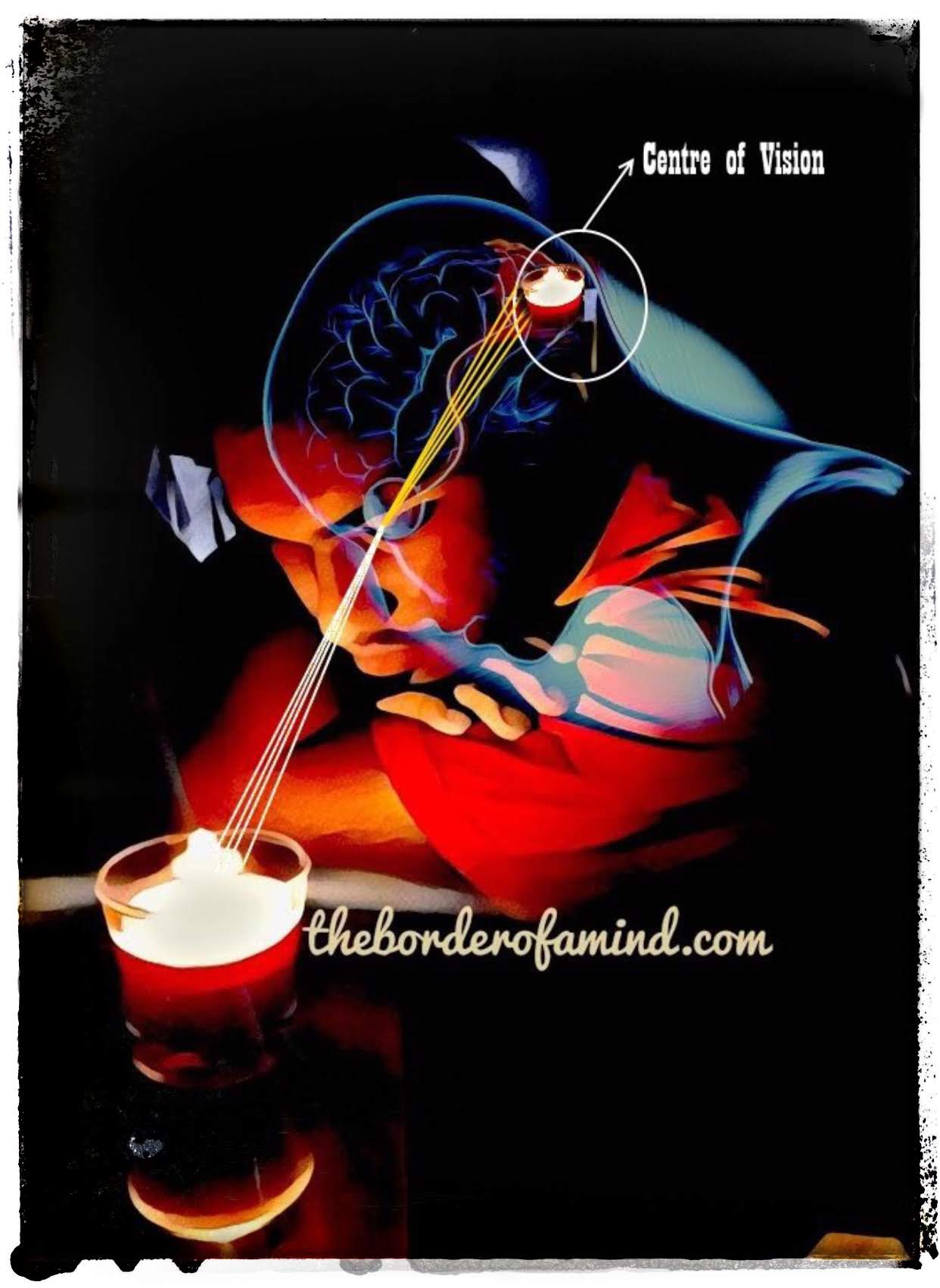Today’s disposition is to write something into our ponder series. For new readers who aren’t aware of these series, below is the thematic intention of this initiative that I mentioned in my first post on this topic.
” Often in the rush of our routines, we fail to appreciate certain hidden subtleties and nuances of living in this universe, which we can only admire if we consciously make an effort to think deeply with profundity. We have to pause for a moment and ponder, and hence the name of the series. “
Let’s ponder on vision today. We are aware of the technical description of vision and how it’s accomplished in our bodily systems. The intention here is to delve in little deeper and explore the miraculous aspects of this process which we deem as pretty novel and relegate as trivial.

..Illustrated by The Border of a Mind Studios…
The illustration above shows a person gazing at a candle. Light bundles from this candle fall on the retina upside down. The image of the candle gets converted into electrical impulses and is transmitted to the centre of vision situated at the back of the brain. As you would know, the brain is pitch dark inside and it’s totally insulated from light. It’s technically impossible for light to reach this centre of vision. But we see the candle image transmitted there. In other words, the world of lights and depth is formed in this tiny spot which does not receive any sort of light from outside. The candle outside is hot. This applies to all senses. If we think about it, when we see the light of the candle and even when we feel its heat, the inside of our brain is completely dark, pitch dark and there’s not temperature change there. Isn’t that truly miraculous? Spare some thought into it. Ever wondered on how this happens? Those are the first steps that open up our thought process on several important things that we tend to wade off in our routines. Those who have been reading me for a long time might recollect the post “perceptions” which also conceptually shares the same context.
In his famous book ‘Eye and Brain: The Psychology of Seeing‘ , Richard Gregory writes:
“We are so familiar with seeing, that it takes a leap of imagination to realize that there are problems to be solved. But consider it. We are given tiny distorted upside-down images in the eyes, and we see separate solid objects in surrounding space. From the patterns of stimulation on the retina we perceive the world of objects and this is nothing short of a miracle.” (Eye and Brain, 1966)
